

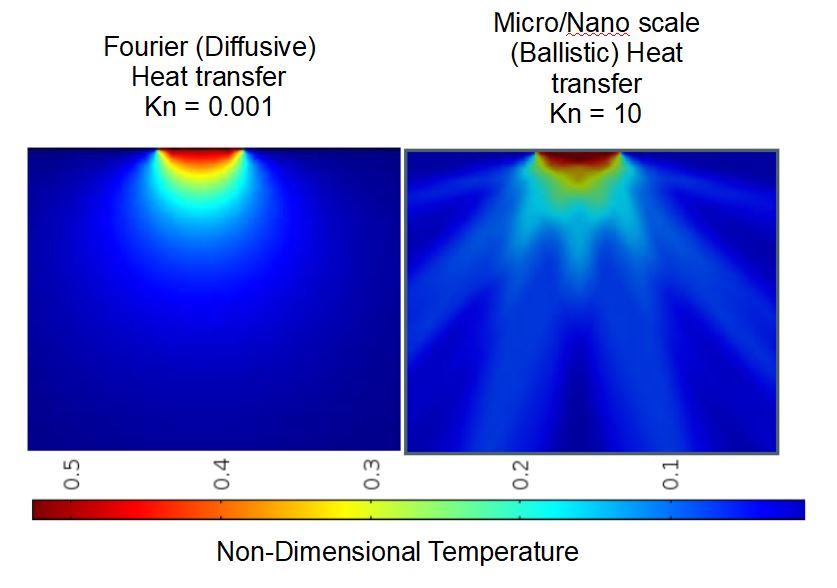
Course: ME503: Micro/Nano Scale Energy Transport Processes
Duration: August 2015 - December 2015
Collaborators: Aalok Gaitonde, Bhagyashree Ganore
Advisor: Prof Timothy Fisher
Institute: Purdue University, USA
Electronic devices keep getting more powerful and smaller due to Moore’s Law. Todays transistors are just 70 atoms wide (Silicon’s atomic size is \(\approx 2\,\mathrm{nm}\)). Thermal considerations have significantly impact the reliability and performance. Heat conduction for such small lengths (micro/nanoscale) is different from the macroscale.
Fourier’s heat conduction equation is not applicable to heat transfer at small length scales because the heat transport mechanism is different. Instead, Boltzmann Transport Equation (BTE) governs the heat transfer for these length scales. BTE being a 7 dimensional equation, is difficult to solve numerically. I solved the BTE in COMSOL (FEA solver) by simplifying it and comparing it with the Radiative Transport Equation, which is solved by COMSOL.
Microscale effects in a thin layer inhibit heat flow from the hotspots in a processor (transistor) causing temperature peaks which can reduce the time to failure 1. A macroscale (Fourier) heat conduction model applied to a microscale does not capture microscale effects leading to a significant error and underprediction of temperatures in a processor.
Heat conduction equations for macroscale assume that the transport properties are independent of the size (length scale). In metals, free electrons continuously move randomly and collide with each other, which results in energy transfer. Mean free path is the distance travelled between successive collisions and relaxation time is the time between successive collisions. When two ends of a metal are maintained at different temperatures, there is a net transport of energy from the hot to the cold side since the electrons on the hot side have more energy (diffusive heat transfer). When the device thickness is similar to the mean free path, the electrons (in metals) and phonons (primary heat carriers in semiconductors and insulators) mostly collide with the boundary rather than each other. This is known as ballistc heat transfer2.
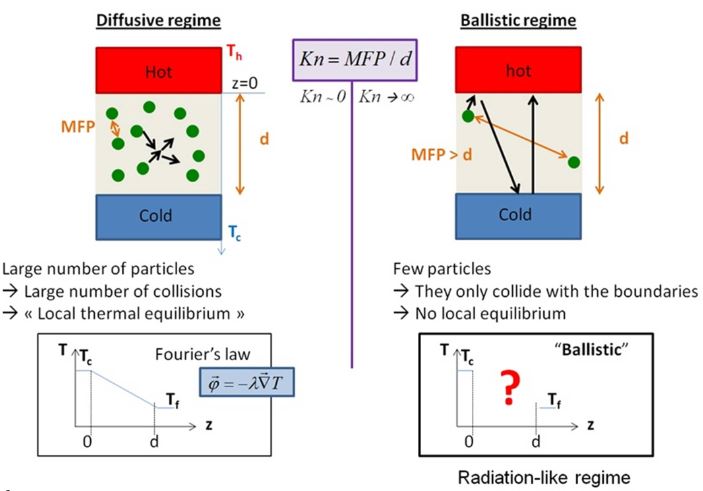
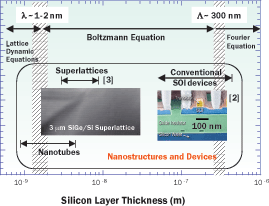
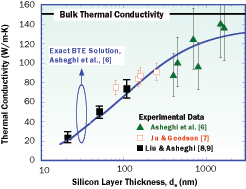
Developed 2D micro/nanoscale heat transfer simulation in COMSOL
Validated model with analytical solutions for different boundary conditions (temperature only & combination of temperature and heat flux)
Simplified BTE to Radiative Transport Equation, which is solved in COMSOL
Demonstrated that Fourier heat conduction equation is not applicable \(<\,10\,\mathrm{um}\) thickness
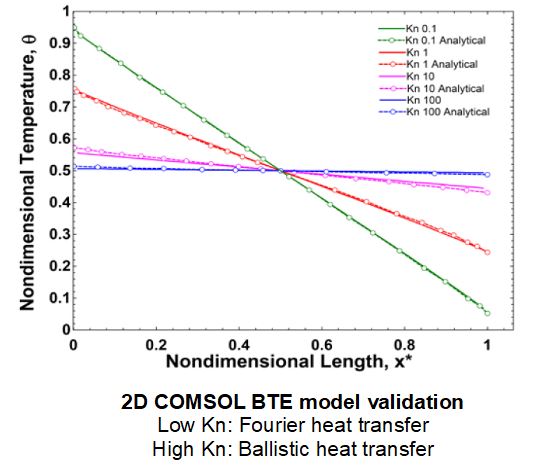
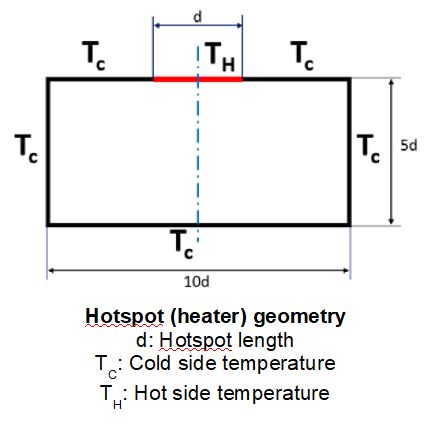
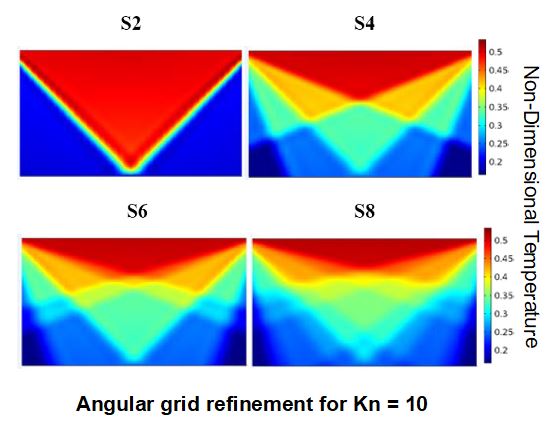
Developing Micro/nanoscale heat transport model in COMSOL
Running COMSOL simulations from MATLAB with COMSOL MATLAB LiveLink
Understanding and simplifying new physics (governing equations)
Non-dimensionalizing new equations to compare with built-in equations
Flik, M. I., B. I. Choi, and K. E. Goodson. “Heat transfer regimes in microstructures.” Journal of Heat Transfer 114.3 (1992): 666-674. ↩
Heat transfer schematic from P-Olivier Chapius and Heat transfer regimes and thermal conductivity images from Electronics Cooling magazine ↩